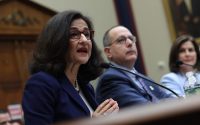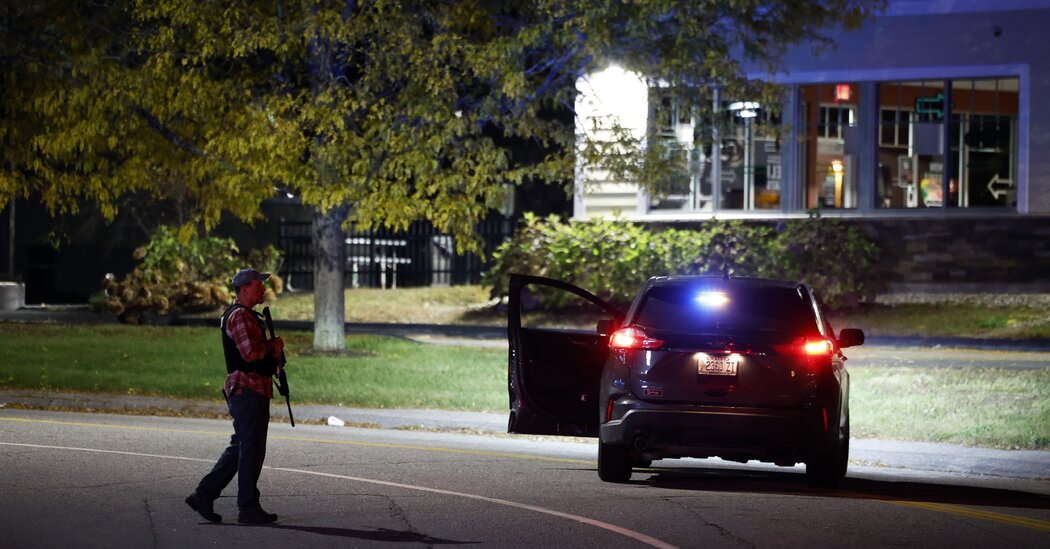Four Years Since California Declared a Covid Emergency
What a long four years it’s been.
It was March 4, 2020, when Gov. Gavin Newsom declared a state of emergency to respond to the novel coronavirus.
Fifty people in California had tested positive for the virus by then, and one death had been reported in the state. Schools and businesses remained open at first; most people had never heard of a stay-at-home order. That would not be announced for another two weeks.
Today, Covid hasn’t gone away, and the highly contagious virus continues to circulate and occasionally surge. And the toll has been horrifying: Some 112,000 Californians have died of Covid. Nationwide, the virus has killed 1.18 million people. At the peak of the recent surge in January, 2,400 people were dying of the disease each week.
As many experts predicted back in the spring of 2020, Covid has become something that people have had to learn to live with. The virus still seems to crest in the summer and winter, but layers of protection from vaccines, previous infections and antiviral treatments have made hospitalization and death much less likely. According to the Centers for Disease Control and Prevention, 98 percent of people aged 16 and older had Covid antibodies in the second half of 2023, compared with 21 percent in January 2021.
Covid killed roughly 75,000 people in the country last year, when it was the 10th leading cause of death in the United States. It was even worse in 2021, when the virus killed 450,000 people and was the third leading cause of death.
The virus remains dangerous, and an infection continues to bring the risk not just of acute symptoms but also of developing long Covid, with problems that persist for months or even years. But the sharp reduction in deaths from the virus prompted a loosening of pandemic restrictions last year, when California lifted its emergency order, and so did federal officials.
On Friday, the C.D.C. announced a further loosening of Covid rules, saying that people who have tested positive for the virus no longer need to remain in isolation for five days if they are otherwise feeling well. The recommended isolation period was 10 days early in the pandemic, and five for the past two years.
The federal rule change follows a similar move by California officials in January. Scientists who supported the shift said that Covid had transitioned away from being an acute public health crisis and had become more of a featured virus among an array of respiratory risks. They said the benefits of strict isolation no longer outweighed the cost of missed school, work and income for asymptomatic people.
“The emergency has ended,” Dr. Melissa Sutton, medical director for respiratory viral pathogens at the Oregon Health Authority, told my colleagues. “Covid-19 is endemic. We’re in a different phase.”
For more:
-
Amid all the upheaval of the pandemic, there have been moments of hope and positive change. What have been your pandemic silver linings? Tell us at [email protected].
-
Your 2024 guide to Covid symptoms and treatment.
-
How to make the most of your at-home Covid test.
Tell us
We’ve been compiling our California soundtrack for years, and have captured most of the hits. What songs do you think still need to be added?
Tell us at [email protected]. Please include your name, the city where you live, and a few sentences on why you think your song deserves to be included.
And before you go, some good news
Of all the images that have come to represent Los Angeles — the Hollywood sign, pink terrazzo sidewalk stars, the Dodgers’ logo — the most iconic may be the palm.
Palm trees (they aren’t technically trees, but never mind) are ubiquitous in the city, lining major avenues and quiet streets. Their elegant arcing silhouettes have become a metaphor in the popular imagination for the Golden State and its golden dream.
In an article for LAist, Zoie Matthew looks at the symbolic plant, its history in L.A. and the debate over whether palms, which can pose a fire risk, should have a future in the city.
Palms were first brought to the city by Spanish missionaries in the 18th century, but they were not planted extensively in the city until the early days of the Great Depression, when the city was preparing to host the 1932 Summer Olympics and 25,000 palms were put in under an unemployment relief program, Matthew wrote.
A number of palm species are seen in the city today, but the three most common, according to Matthew, are Mexican fan palms, which grow as tall as 100 feet and have a fan-like leaf; California fan palms, which are wider and have spikier fronds; and Canary Island date palms, which have trunks whose surface resembles the skin of a pineapple.
Learn more about L.A.’s most famous palms and read the full article here.
Thanks for reading. I’ll be back tomorrow. — Soumya
P.S. Here’s today’s Mini Crossword.
Maia Coleman and Briana Scalia contributed to California Today. You can reach the team at [email protected].
Sign up here to get this newsletter in your inbox.


